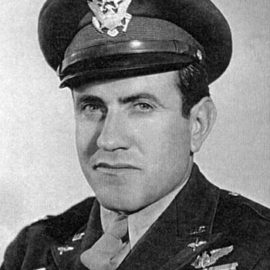

This article is an excerpt from the Shortform book guide to "Talking to Strangers" by Malcolm Gladwell. Shortform has the world's best summaries and analyses of books you should be reading.
Like this article? Sign up for a free trial here .
Was Amanda Knox guilty? What were the issues with the Amanda Knox case? Why were so many people so sure of her guilt, despite the evidence suggesting otherwise?
We’ll cover how Amanda Knox’s actions made her seem guilty, and why we all have a hard time understanding strangers when they don’t act the way we expect them to.
The Amanda Knox Case
On November 1, 2007, an American college student named Meredith Kercher was murdered in the small, Italian town of Perugia. Kercher’s body was found by her roommate, Amanda Knox. Knox called the police to the scene of the gruesome crime. Almost immediately, Amanda Knox was added to the list of subjects—she was ultimately convicted of murder and put in prison. Was Amanda Knox guilty?
The arrest and conviction of Amanda Knox was a sensation in the media and tabloids. But it doesn’t make sense that Amanda Knox was implicated in the murder. There was no physical evidence that put Knox at the scene of the crime. Nor was there any motive that explained why she would have murdered her roommate. The police botched the investigation of evidence and DNA, and the prosecution relied on fantasy to make the case. Was Amanda Knox guilty? Somehow, eight years went by before the Italian Supreme Court declared Knox innocent.
There are plenty of articles and books that detail all of the mistakes made by the investigators and prosecutors in the Amanda Knox case. But the simplest theory of what went wrong with the Amanda Knox case is this: the police expected Knox to be transparent and she wasn’t. Her case is an example of the consequences of assuming that the way a stranger looks is a reliable indicator of how she feels. Was Amanda Knox guilty? No, but she acted like she was.
The Amanda Knox Case and Mismatching
Was Amanda Knox guilty? Amanda Knox was innocent. But in the months following the crime, the way she acted made her seem guilty. She was mismatched, like Nervous Nelly. The investigators on the case drew wild conclusions about Amanda’s role in Kercher’s murder based on the way she behaved.
Lead investigator Edgardo Giobbi said that he didn’t even need to rely on any other kinds of investigation because he had observed Knox’s guilt through her psychological and behavioral reactions to the murder. And the prosecutor on the case said that although the physical evidence collected had been very unclear, what was clear was that Amanda’s behavior was irrational.
Amanda Knox (like most strangers) was a mystery to the people who didn’t know her closely. She was the kind of outcast kid in high school who sang in the hallways and pretended to be an elephant in front of her classmates. Like most misfits, Amanda Knox had learned to be herself even when the people around her couldn’t understand her. So, in the days following Meredith Kercher’s murder, Knox didn’t adjust her behavior to conform to peoples’ expectations.
Why did people think Amanda Knox was guilty? Here are a few examples of how Amanda Knox behaved after Meredith Kercher’s murder:
- The police told Amanda to put on protective booties before walking through the crime scene. She did so, and then struck a pose and said “ta-dah.”
- When Kercher’s friend Sophie attempted to hug Amanda and express sympathies, Knox just stood with her arms at her sides and remained expressionless.
- When Kercher’s friend Natalie said, “I hope she didn’t suffer,” Amanda yelled, “She fucking bled to death!”
- While most people were crying and speaking in hushed tones around Meredith Kercher’s family, Amanda Knox and her boyfriend were cuddling up with each other, kissing, and even laughing.
- In custody, Amanda did yoga and showed off her splits to the guard on duty.
As Diane Sawyer would later say in an interview with Amanda Knox (after she had been declared innocent), that kind of behavior didn’t look like grief to most people. Many people found Knox’s demeanor to be cold and calculating.
So Amanda Knox spent four years in prison (and another four years waiting to be declared officially innocent) for the crime of behaving unpredictably—for being mismatched. But being weird is not a crime.

———End of Preview———
Like what you just read? Read the rest of the world's best book summary and analysis of Malcolm Gladwell's "Talking to Strangers" at Shortform .
Here's what you'll find in our full Talking to Strangers summary :
- Why we don't understand strangers
- How to talk to strangers in a cautious way so you don't get fooled
- How Hitler deceived so many world leaders






